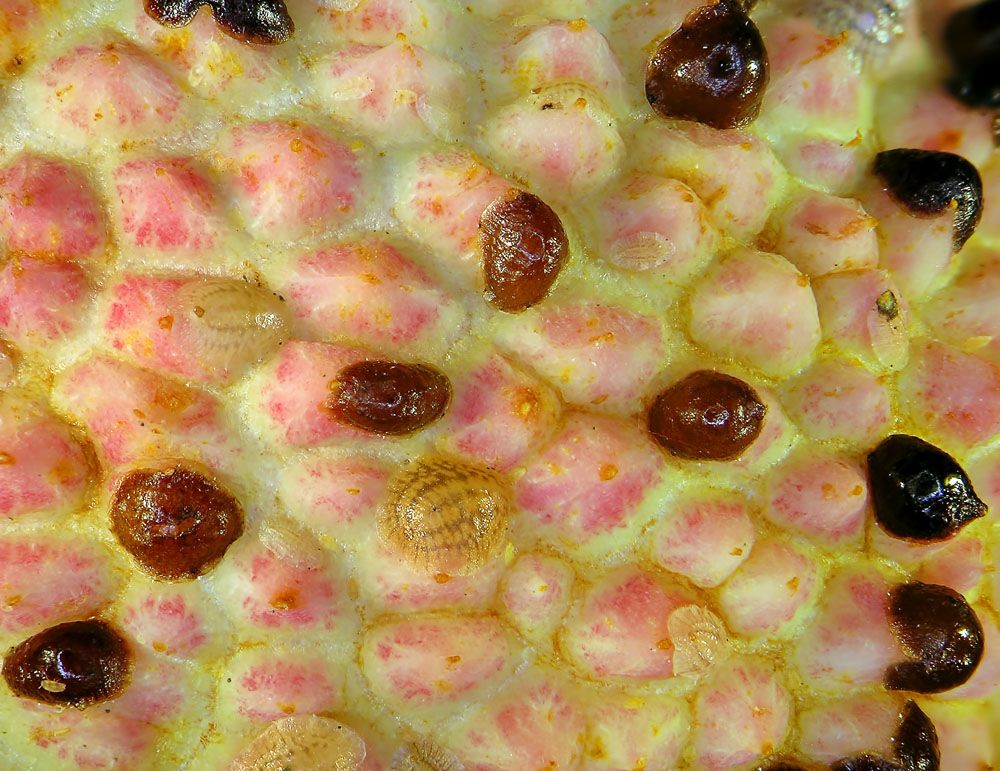
Hemispherical Scale – Saisettia coffee
Hemispherical Scale (Saisettia coffee)
Common Name: Hemispherical Scale
Latin Name: Saisettia coffee
Appearance:
Adult:
The adult scale varies in size depending on the host plant. The scale ranges from 4.5 mm for Cycas to 2.0 mm for Asparagus fern. The scale, which is rather hemispherical, brown, smooth, and glossy, may resemble a small army helmet. On the dorsal surface of young females, there may be a pattern of ridges resembling the letter “H.”
Egg:
The oblong, pinkish beige eggs are around 0.7 mm long and are sheltered in a mass by the mother’s body.
Crawler:
The crawler is a flat, pinkish beige creature around 1.0 mm in length with two red eye spots. The antennae and legs are stubby and short. Two setae protrude from the back.
Nymphs:
Nymphs are semitransparent, pale yellow or pink, and flat (when young) to humped (older). They are so close to the host plant that the legs and antennae are hidden. On each side, two faint lines begin at the boundary and decline in strength toward the center. The black scale group’s unique “H” pattern may be seen in nymphs and early adults.
Host plant:
In Hawaii, this scale affects ferns, Clermontia parviflora, Pipturus, Solanum santiwongsei, orchids, and proteas. Bittermelon hosts the hemispherical scale. In other regions of the world, coffee is its principal host, with tea, citrus, guava, mango, and other cultivated and wild plants as alternatives.
Territory:
The hemispherical scale insect, thought to have originated in South America, is now found in greenhouses and interiorscapes across the United States.
Damages caused by Hemispherical Scale:
The scales are frequently visible as glossy brown domes on the undersides of the leaves near the midribs. They generate a lot of honeydew, which causes sticky deposits to form on adjacent surfaces. Honeydew may attract ants, and sooty molds may form on the sugary deposits. Leaves that are badly contaminated may drop early.
Life history and habits:
The hemispherical scale bug is a tropical insect that has become a frequent greenhouse pest. The scale may survive outside in moderate climates. The hemispherical scale, unlike many other scales, secretes very little wax. However, the scales create a lot of honeydew, which permits sooty mold to thrive. Males are unknown, and reproduction is accomplished by parthenogenesis. Each female can lay up to 1,000 eggs. The female dies after depositing the eggs, and her body shrinks to form a cup or helmet over the eggs. The egg stage and the three nymphal instars require at least 40 days and can take up to 105 days to develop. Each year, numerous generations may occur in the greenhouse, with all stages present at any moment. Once they’ve started feeding, the nymphs don’t move much. The hemispherical scale insect has low indoor parasitism and is frequently a major nuisance.
